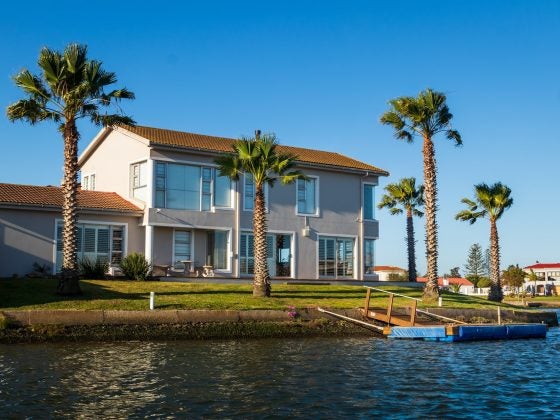A brand’s reputation is a highly valuable asset.
Building a good reputation and image for your business influences how the public sees you. It allows you to access more opportunities, grow your customer base, and achieve long-term success.
Public relations strategies are critical to building and maintaining this good reputation. Good PR practices help maintain your company’s image and achieve your business goals, whether you’re a small business startup or a large enterprise.
Read below for an overview of public relations, how it works, and why it is an essential investment for all businesses.
What is PR?
Public relations (PR) refers to an organization’s strategic communication process to build and maintain positive relationships with the public. The primary goal of PR and PR campaigns is to create a good image and reputation for the business or organization it represents.
PR efforts involve managing and shaping public perception, conveying key messages to a target audience, and fostering goodwill with various stakeholders. These stakeholders often include the general public, customers, employees, investors, and the media.
Common examples include publishing press releases, posting on social media, staging a news conference, holding interviews with journalists, and other PR efforts.
The Importance of a PR Strategy
Every industry can be competitive. Running a business involves ensuring you stand out against your competitors and maintain a good image.
Good PR strategies can be effective at achieving this goal. No matter the size of your business or your resources, prioritizing PR offers several advantages, such as the ones below.
Building brand credibility
A solid PR strategy is essential in building and enhancing brand credibility. Through strategic communication, organizations can shape public perceptions, establish trust, and differentiate themselves in the market.
These efforts can help establish your organization’s expertise and thought leadership within your industry. This level of trust and credibility allows your company to foster long-term relationships with customers and stakeholders.
Managing your reputation
While a good reputation can be a significant strength for your business, it takes a considerable amount of time and effort to build it. Damaging it, however, can be incredibly easy.
A PR plan and strategy can act as a shield. It helps your organization build a positive public image and protects it through challenges and crises that might come your way.
PR professionals can help you address issues proactively and communicate strategically, safeguarding your brand’s reputation. They help mitigate potential damage and maintain the trust of your audience.
Increasing visibility
PR is a compelling tool for increasing visibility and brand awareness in a competitive market. Through media coverage, influencer partnerships, and strategic events, organizations can reach a broader audience and improve their brand presence.
Increased brand visibility helps promote your brand, products, and services effectively, attracting new customers and creating opportunities for growth and collaboration.
Improving community relationships
Aside from customer purchases and traditional business transactions, community relationships are critical to an organization’s success. A well-executed PR strategy involves engaging with the community, participating in meaningful initiatives, and demonstrating corporate social responsibility.
These efforts might not translate directly into profits and immediate revenue, but they can do wonders for your brand’s reputation. Building community relationships helps foster a positive connection between your business and the community it serves.
Communicating brand values
Successful PR strategies can effectively communicate your brand’s mission and values. Aligning your messaging with your company’s core principles allows you to connect with your audience on a deeper level.
Audiences often feel the need to support companies that share similar values. A 2021 survey found that 70 percent of respondents buy from brands that reflect their principles and priorities.
PR helps your business get on this level of communication. Aside from offering quality goods and services, showing your brand values helps improve customer relationships and earn loyalty.

Complementing marketing activities
Marketing and PR are essential in promoting your business and maintaining a good reputation. While marketing focuses on promoting your brand, products, or services, PR creates a holistic brand narrative.
A well-coordinated PR and marketing strategy ensures that the brand message remains consistent across all channels. This practice helps maximize the impact of your messaging and creates a comprehensive and compelling brand story.
Attracting investors
Companies may seek further external investments from time to time, especially when planning business changes or improvements.
A strong PR strategy helps with this effort by showcasing the company’s strengths, achievements, and growth potential. As a result, the business becomes more attractive to potential investors. Positive media coverage and a well-managed reputation can significantly influence investment decisions.
Types of PR Strategies
An effective public relations plan involves using different types of PR. Each type communicates specific messages to different audiences. Exploring these types allows the company to convey a more comprehensive and cohesive brand narrative.
Here are some of the most common types of PR strategies depending on the company’s goals and target audience.
Media relations
Media relations is the most widely known type of PR. It stands at the forefront of most PR strategies, focusing on cultivating relationships with journalists, media outlets, and news outlets.
Through press releases, media interviews, and strategic storytelling, businesses can secure positive coverage and manage their image in the public eye.
Production relations
Production relations work the closest with marketing strategies. This type of PR often ties itself to specific campaigns such as product launches, new features, special campaigns, company events, etc.
These efforts help create a cohesive brand image and narrative across multiple channels, supporting existing marketing campaigns and gaining attention from customers and business partners.
Investor relations
For organizations navigating financial markets, investor relations are essential. Investor relations help build trust and attract and retain investments.
This strategy involves transparent communication with shareholders and potential investors. These efforts provide potential investors and shareholders with timely and accurate information for making informed decisions.
Internal relations
A collaborative and motivated workforce significantly contributes to your business’s success. Treating your employees fairly and keeping them satisfied also translates to positive public perceptions.
Internal relations focus on effective communication within the organization. These efforts keep employees informed, engaged, and aligned with the company’s goals, mission, and values.
Government relations
Businesses still fall under government regulation, so it’s imperative that you make efforts to fulfill legal obligations and stay in the government’s good graces.
Government relations involve building positive relationships with government officials, agencies, and policymakers to influence public policy decisions and advocate for the organization’s interests.
Community relations
Businesses are not isolated entities. They exist within a broader community. Maintaining positive community relationships is necessary to ensure the company’s success and longevity.
Community relations help with building positive relationships with local communities through social responsibility initiatives, sponsorships, and community engagement. Positive community relations contribute to a favorable public image and enhance brand loyalty.
Customer relations
Satisfied customers are a cornerstone of every successful business. PR helps businesses communicate in a way that builds positive and lasting connections with their customers.
Customer relations in PR involve creating positive interactions, addressing customer concerns, and maintaining a strong customer-centric focus. Building and nurturing lasting customer relationships is critical for brand loyalty and sustained success.
Channels To Use for PR Strategies
Businesses and PR agencies often use multiple channels to share their messages. Disseminating company messages requires proper strategies to reach the right demographics and audience groups.
Understanding these three main channels can help your PR team create and implement a comprehensive and effective PR strategy.

Earned media
Earned media is the highest goal many public relations efforts can have. As the name suggests, earned media refers to content pieces that other parties create for your brand without your company’s intervention or payment.
It involves the organic, unpaid publicity generated by media outlets, influencers, and the general public. Securing positive coverage through press mentions, reviews, and social media shares can significantly enhance an organization’s credibility.
Earned media is a testament to the authenticity and appeal of a brand, as it voluntarily comes from external sources.
Here are some PR tactics you can use to gain more earned media for your business:
- Crafting newsworthy press releases
- Building relationships with journalists, news outlets, bloggers, and influencers
- Encouraging user-generated content and testimonials
Paid media
As the name suggests, paid media refers to content you pay for to be published. Paid media is a common part of many digital marketing strategies. This channel involves investing in advertising to reach a target audience.
While this channel may lack the authenticity of earned media, it also has its strengths. Paid media offers precision in targeting and greater control over the message. Examples of paid media include sponsored content, guest posts, social media ads, and other paid promotions.
Some strategies you can explore for paid media include the following:
- Sponsoring content placements in relevant publications
- Social media advertising campaigns
- Pay-per-click (PPC) ad campaigns to drive traffic
Owned media
Owned media refers to the channels that an organization has control over, such as its website, social media posts, podcasts, and newsletters.
This channel allows organizations to tell their own stories, share updates, and engage directly with their audience. Owned media is a powerful tool for building a consistent brand image and controlling the narrative.
Here are some tactics your business can use to improve your owned media channels:
- Maintaining an informative and well-designed company website that follows search engine optimization (SEO) best practices
- Posting engaging content on your brand’s social media platforms
- Developing and distributing newsletters to a subscriber base
How To Create a PR Strategy for Your Business
Effective PR strategies come from careful planning. Planning out your PR strategies helps your company prepare for various scenarios and ensures that your company messaging aligns with your set narrative.
While more experienced businesses may already have a set process for PR strategizing, here is a step-by-step guide to serve as a starting point:
1. Research brand factors
Begin planning your PR strategy by thoroughly examining your brand’s current situation and your standing within the market. Identify your unique selling points, key differentiators, and the current public perception of your brand.
This step could include the following:
- Using listening tools for media attention
- Tracking media mentions and brand mentions
- Reviewing influencer partnerships and results
- Assessing social media engagement and website traffic
Aside from looking inward, it’s also essential to look at your competitors and your company’s standing in a market context. Delve into your industry landscape to understand trends, competitor positioning, and potential opportunities.
This initial research sets the stage for a strategy that aligns with your brand’s identity.
2. Identify your goals
After understanding your company’s current situation, it’s time to set some goals. Understanding what your team wants to achieve will guide the development of your strategy and provide a benchmark for success.
Your PR goals could include the following:
- Boosting brand awareness
- Launching a new product or service
- Crisis management
Ensure your goals are realistic, aligned with overall business objectives, and adaptable to changing circumstances. Setting key performance indicators (KPIs) can help make your goals more achievable and measurable.
3. Create a timeline
Timing is critical in PR, especially when responding to crises. It’s also important to follow a schedule to ensure consistency in your messaging.
Use a content calendar and plan out necessary tasks, deadlines, and releases. Craft a timeline that outlines the key milestones and activities of your strategy. Consider both short-term and long-term goals, set a budget, and allocate resources accordingly.
A well-structured timeline ensures that your PR efforts are timely, relevant, and consistent with other business initiatives. Be flexible and adjust the timeline as needed to adapt to unforeseen changes.
4. Choose your tactics
With your goals in mind, select the PR tactics that best align with your objectives and resonate with your target audience. These tactics could include media outreach, content creation, social media campaigns, events, or influencer partnerships.
Select tactics that suit your industry’s nuances and your audience’s preferences. The chosen tactics should complement each other to create a cohesive and effective PR campaign.
5. Monitor your progress
As you launch your campaign, monitor your strategy regularly. Use the KPIs you set earlier in the planning stage to measure the impact of your efforts against your defined goals.
Analyze media coverage, social media engagement, website traffic, and other relevant metrics. Continuous monitoring allows for real-time adjustments, ensuring your strategy remains responsive to changing circumstances.
Maintain Your Brand’s Reputation
PR can be a powerful tool to establish and maintain your business’s positive reputation. A well-crafted PR strategy helps align your brand with your business goals and the expectations of your audience.
Understanding the fundamentals alongside adequate research and planning helps you create PR activities that connect with your audience and maintain positive perceptions of your brand.


















